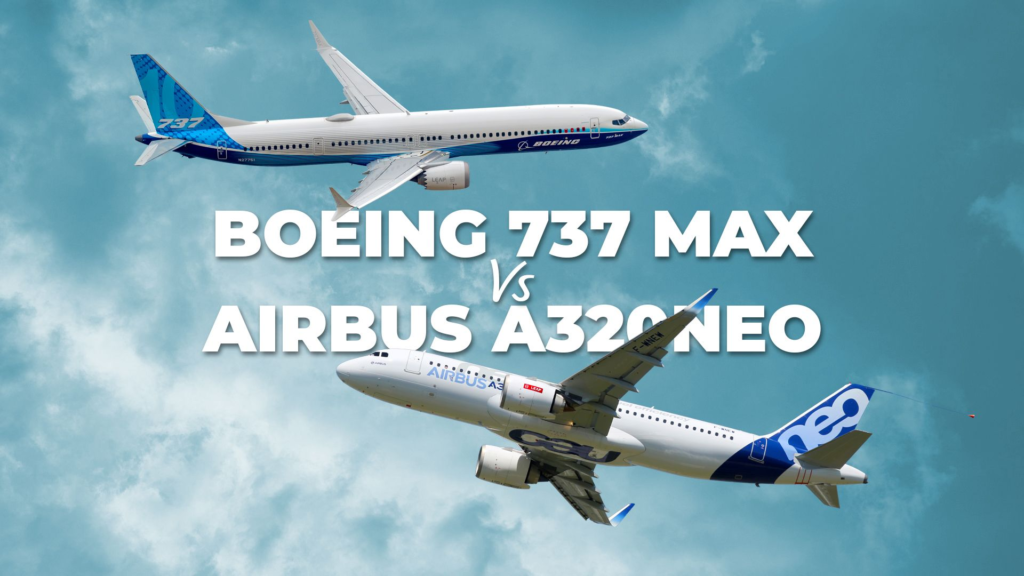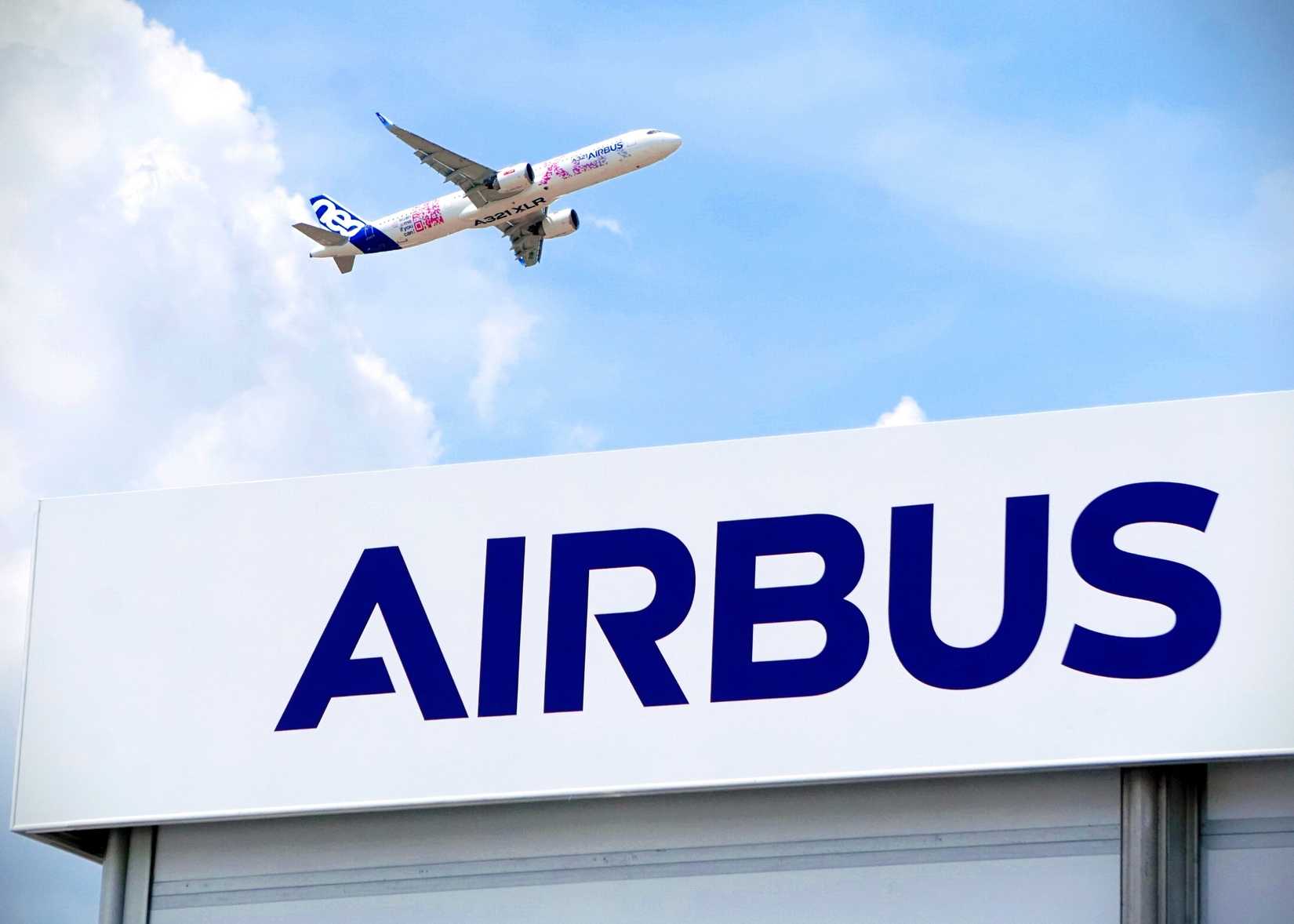Over the years, ![]() Boeing and Airbus have produced aircraft that have defined modern aviation and shaped the fleets of airlines across the world. Currently, their narrowbody and widebody jets dominate the commercial market and have become the backbone of short, medium, and long-haul networks. Both the Boeing 737 MAX and Airbus A320neo, today, serve as the primary workhorses of short and medium-haul travel.
Boeing and Airbus have produced aircraft that have defined modern aviation and shaped the fleets of airlines across the world. Currently, their narrowbody and widebody jets dominate the commercial market and have become the backbone of short, medium, and long-haul networks. Both the Boeing 737 MAX and Airbus A320neo, today, serve as the primary workhorses of short and medium-haul travel.
- First Delivery
-
January 20, 2016
- Number Delivered
-
3,482
- Production Sites
-
Toulouse, France
The Boeing 737 first entered service in the 1960s and has remained in continuous production ever since. Airbus joined the single-aisle market in the late 1980s with the A320, which quickly became a major success for the European manufacturer. As airlines sought more fuel efficient aircraft to lower operating costs, Airbus launched the A320neo in 2016.
The US planemaker responded the following year with the 737 MAX to remain competitive. These two programs now compete directly on efficiency, performance, and passenger comfort, and airlines often favor one over the other depending on their strategy.
Order Books Show Airbus A320neo Family Leads
Both narrowbody families have secured thousands of commitments from airlines worldwide. It is worth noting that the Boeing 737 MAX program includes four variants: the smallest MAX 7, the most popular MAX 8, the larger MAX 9, and the stretched MAX 10. At present, only the MAX 8 and MAX 9 are in active service; the planemaker is still awaiting certification for the MAX 7 and MAX 10.
According to ch-aviation data, there are more than 1,400 MAX 8s currently flying, alongside about 276 MAX 9s. The US manufacturer has also developed a higher-density version of the MAX 8, which is known as the 737 MAX 8-200. The aircraft first entered service in 2018 with Ryanair, and today, over 200 examples are in operation across global fleets.
On the other hand, Airbus’ A320neo family includes the A319neo, A320neo, and A321neo. The data shows that there are over 2,100 A320neos in active service, about 23 A319neos, and 1,661 A321neo aircraft across fleets. In addition, the European giant has introduced the long-range A321LR and the extra-long-range A321XLR, with nearly 150 LRs and around 18 XLRs currently in operation.
In terms of the backlog, altogether, the European manufacturer has a backlog of about 7,156 aircraft across the NEO family. Meanwhile, Boeing currently has around 3,235 orders, including 2,768 for the MAX 8, 190 for the MAX 9, and 277 for the MAX 8-200. In addition, the manufacturer also holds 1,271 orders for the MAX 10 and 299 for the MAX 7. Based on these figures, we can conclude that Airbus holds the lead in overall commitments.
Why Airbus Pulls Ahead And Boeing Struggles To Keep Pace
Indeed, both the MAX and NEO families offer notable advantages for airlines, but the gap in orders and deliveries is hard to ignore. Boeing’s narrowbody program accounts for only about 60% of what the A320neo has sold. The European planemaker has delivered nearly 4,100 aircraft out of more than 11,000 orders (equal to 36% of its backlog). By contrast, the US manufacturer has delivered just under 2,000 jets from over 6,700 commitments, or about 28%.
This shows how much ground Boeing has lost. Of course, much of that comes down to the two fatal crashes that occurred in 2018 and 2019. On October 29, 2018, Lion Air flight JT610 crashed into the Java Sea 13 minutes after takeoff, resulting in the loss of all 189 people on board. In addition, less than five months later, Ethiopian Airlines flight ET302 went down shortly after departing Addis Ababa, with 157 fatalities.
Both accidents involved the MAX 8 and were traced back to problems with the Maneuvering Characteristics Augmentation System (MCAS), which repeatedly forced the aircraft’s nose down based on faulty sensor data. Those crashes led to the worldwide grounding of the type in March 2019, which lasted until November 2020 and froze deliveries for nearly two years. Boeing suspended MAX production during this time and later restarted at a reduced pace.
However, it resulted in multiple order cancellations, and airline confidence in the MAX took a serious hit. In 2020, the company reported its weakest annual sales in decades. More recently, new issues have further compounded Boeing’s challenges. Earlier last year, an Alaska Airlines MAX 9 lost a door panel during a climb. The aircraft landed safely, but investigations found that the bolts securing the plug had not been installed properly.
Indeed, the incident exposed major quality control lapses at the planemaker and its fuselage supplier, Spirit AeroSystems. In response, the Federal Aviation Administration (FAA) capped MAX production at 38 aircraft per month, which has limited Boeing’s ability to close the gap with Airbus.
Boeing Is Seeing Progress In MAX Output As It Works Toward Recovery
That being said, it seems that things are beginning to move in the right direction for the US manufacturer. Over the past year, it has placed more focus on improving production quality. The company has demonstrated progress in areas that are jointly monitored with the FAA. In its most recent Chief Aerospace Safety Report, Boeing noted that improvements are ongoing across its internal safety and performance systems, and it aims to continue this progress as it works to restore regulatory confidence.
Last year, according to Boeing, it delivered 260 MAX jets, and this year, by the end of July, it had already delivered 285 jets. The output has been more stable so far. In fact, in May, for the first time, it reached the 38-aircraft monthly target set by the FAA after the production cap was imposed. Looking ahead, Boeing CEO Kelly Ortberg has said that once regulatory conditions allow, output could increase first to 42 aircraft per month and later to 47.
However, no formal request will be submitted until internal quality benchmarks are consistently met, and any further rate increases would be spaced at least six months apart to protect the supply chain and avoid production instability. For now, the FAA continues to keep a close watch on the assembly line in Renton, Washington, overseeing the build process and checking every aircraft before it leaves the factory.
Airbus A321neo Deliveries Hit By Engine Shortages
Airbus, on the other hand, has been dealing with a different set of challenges. Indeed, the company has seen a consistent demand for the A320neo family. Over the years, it has secured thousands of orders and worked steadily to fulfill them. However, more recently, the planemaker has been struggling with engine supply chain issues, and this has forced many assembled aircraft to sit without powerplants.
During the half-year briefing in July, Airbus said it had 60 so-called “gliders” or otherwise complete airframes sitting outside its factories, up from an estimate of 40 in June. The company is facing fluctuating supplies from its largest supplier, CFM International, and more recently from Pratt & Whitney as well, likely tied to the walkout of workers in May this year over contract disputes. As a result, A320neo family production has consistently fallen short of Airbus’ stated goal of 50 aircraft per month in 2025.
Despite this, the European planemaker continues to reaffirm its target of reaching 75 aircraft per month by 2027. To support this, it has added a new final assembly line at its Mobile, Alabama, plant, which is expected to begin operations later this year. While this expansion represents an important step toward long-term goals, it’s worth noting that the pace of progress will depend heavily on whether the broader aerospace supply chain can recover and stabilize. So far this year, Airbus has delivered 333 A320neo family aircraft. On the sales side, it has also secured 289 fresh orders.
Delivery Goals Remain Difficult To Achieve
Looking ahead, the European planemaker will need to accelerate production if it is to meet this year’s delivery goals, but uncertainties around engine supply are making that outcome unlikely. Boeing, however, has not set a specific delivery target for the year and is currently focusing on maintaining stable production and quality. Indeed, both the NEO and MAX families offer measurable advantages to operators, particularly their most popular variants, the A321neo and the MAX 8.
The former combines aerodynamic improvements with new-generation engines and delivers higher fuel efficiency and extended range compared to earlier models. It has the highest capacity and range among the A320neo models, and can accommodate between 195 and 244 passengers (depending on configuration) and fly up to 4,000 nautical miles. By contrast, the MAX 8 typically accommodates 162 to 178 passengers, or up to 210 in the high-density MAX 8-200 version, with a range of around 3,500 nautical miles.
|
Specification |
||
|---|---|---|
|
Overall Length |
146 feet (44.51 meters) |
129 feet 8 inches (39.52 meters) |
|
Wingspan |
117 feet 5 inches (35.80 meters) |
117 feet 10 inches (35.9 meters) |
|
Range |
4,700 nautical miles (8,700 kilometers) |
3,500 nautical miles (6,480 kilometers) |
|
Max Takeoff Weight |
101 tonnes |
82.2 tonnes |
|
Capacity |
Up to 244 |
Up to 178 (in two-class layout) Up to 210 (for 737 MAX 8-200) |
Both variants dominate their families’ order books. Airbus has built its backlog largely on the strength of the A321neo, with carriers such as IndiGo, Turkish Airlines, Wizz Air, United, Volaris, Jet2, easyJet, Air India, and AirAsia all awaiting hundreds of deliveries. IndiGo leads with 567 aircraft on order. Boeing’s backlog is similarly concentrated around the MAX 8, with more than 2,700 still to be delivered. Airlines, including Southwest, flydubai, SpiceJet, and Lion Air, remain among its largest customers.
Competition Between MAX And NEO Families Will Continue To Define Fleets
Overall, the Airbus A320neo family holds the highest number of orders. Since its launch in 2010, the program has received more than 11,000 commitments. Boeing’s 737 MAX, which entered the market less than a year later, has secured just under 7,000. Much of Airbus’ success comes from the A321neo, which has become the best-selling narrowbody.
It is gaining ground with the A321XLR, which allows airlines to operate longer routes with narrowbody aircraft. For many carriers, this adds flexibility to expand into markets that would not justify larger widebodies. The US planemaker, on the other hand, has lacked a real answer in this space. It continues to deal with delays in certifying the remaining MAX models, and those delays have led to cancellations and order swaps.
The company has said it expects certification of the MAX 7 and MAX 10 by next year, but whether that happens remains uncertain. In the meantime, competition between the two families will remain high, as both continue to dominate airline narrowbody fleets worldwide.








